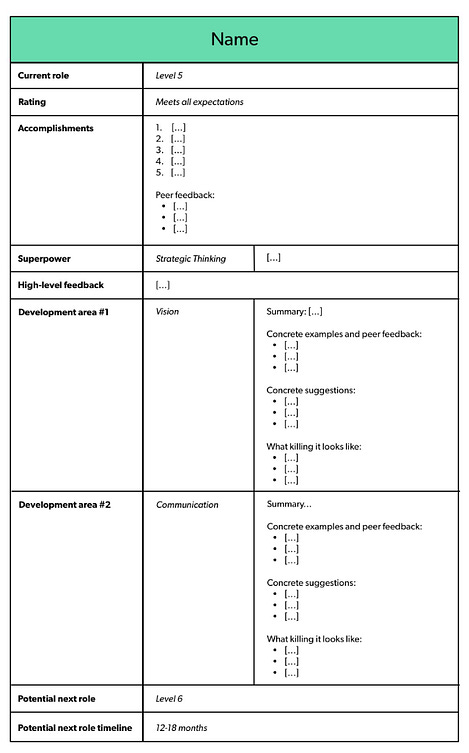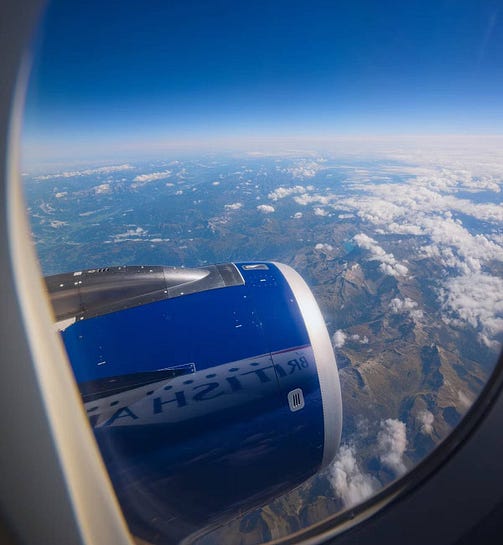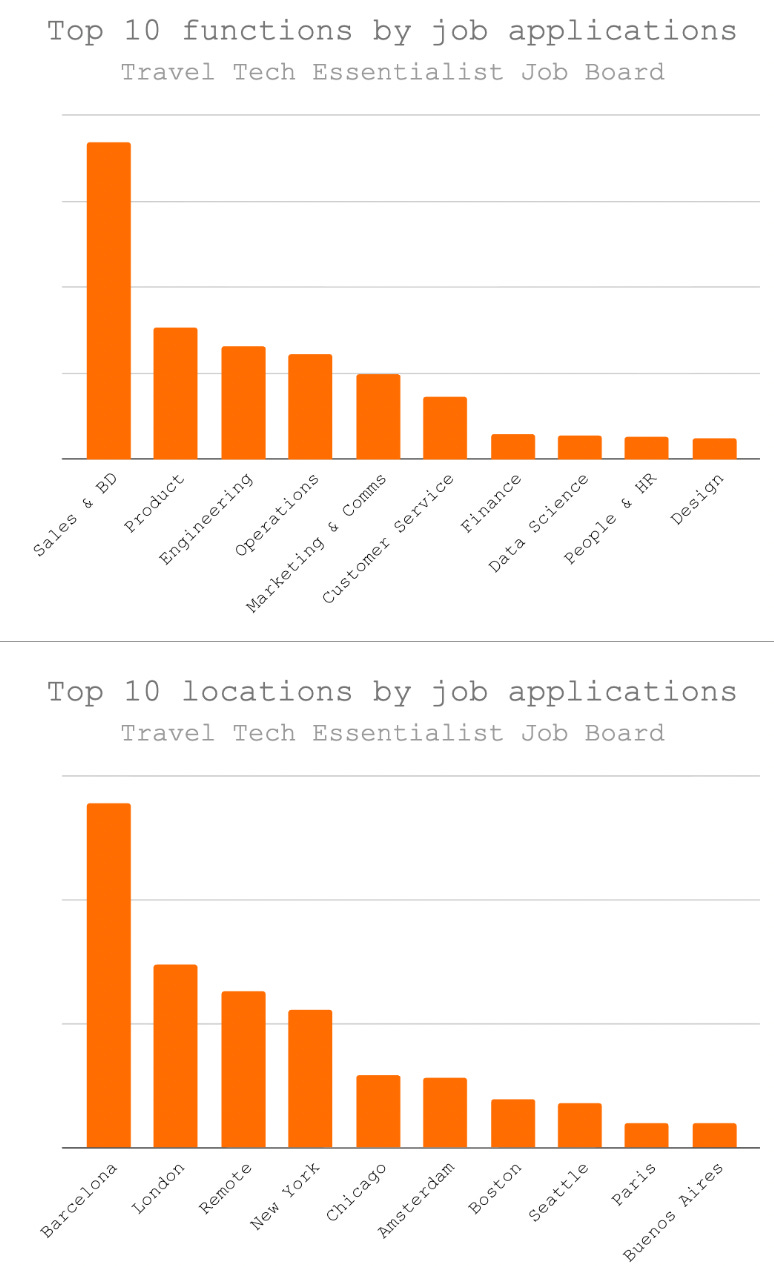Travel Tech Essentialist #188: Human Layer
- Mauricio | Travel Tech Essentialist <traveltechessentialist@substack.com>
- Hidden Recipient <hidden@emailshot.io>
Whether it’s emotional storytelling in travel content, personal voices on LinkedIn, or real-world connections in Airbnb Experiences, the human layer continues to be where the real impact happens. Special thanks to Zoftify for sponsoring this edition of the newsletter:
1. Designing travel products people loveMany of you responded positively to Nesrine Changuel’s Product Delight framework when I mentioned it in an earlier newsletter. So I asked Nesrine if she’d write a guest post on how it applies to travel, and she kindly agreed. In “How to Build Travel Experiences People Love,” she shows how travel products can transcend utility to create a genuine emotional impact. Well worth a read. Thanks again to Nesrine for the contribution. 2. Who’s worth following in Travel Tech?In the last newsletter, I included a quick survey asking readers to name the people they consistently find valuable for travel tech insights on LinkedIn or X. No brands, just individuals. From 60 responses, 133 names were mentioned*. Christian Watts was the clear standout, mentioned by 7 different respondents. Others mentioned three or more times: Peter Syme (5); Brennen Bliss, Lennart Dobravsky, Rafat Ali, and Timothy O’Neil-Dunne (4 each); and Avi Meir, Gilad Berenstein, JoseLuis Vilar, and Martin Soler (3 each). The conversation in travel tech still feels broad, with many voices contributing rather than one overwhelming leader. The sample size is small, so it’s hard to draw broad conclusions, but it gives a glimpse into who’s moving the needle for this audience. *Note: I’ve excluded myself (Mauricio Prieto) from the analysis. Since the survey was shared on this newsletter and on my own social channels, the results are skewed. 3. How do these voices engage on LinkedIn?I analyzed LinkedIn engagement for the individuals who were mentioned 3+ times in the survey, along with two benchmarks: Phocuswire and Skift, two leading travel media brands. The stats are based on a sample of each account’s last 30–50 posts. The table includes three metrics: number of LinkedIn followers, median engagement (likes + comments) per post, and engagement per 1,000 followers to account for differences in audience size. A few quick takeaways:
4. Kayak’s $457M writedownIn a recent Skift interview/article, Kayak CEO Steve Hafner attributed a $457 million writedown on the brand to shrinking SEO traffic. He’s not wrong that AI summaries and paid placements are reshaping how people find travel options.
Fair. But the deeper issue is platform dependency. It’s like a pop-up shop blaming the department store for a drop in foot traffic. If your business depends entirely on someone else bringing people to the door, you’re not in control; they are. Kayak’s issues are not about Google getting greedy. It’s facing pressure because the discovery it relied on was never really its own. When your visibility depends on someone else’s platform, your margins are always at risk. 5. Cheat sheet for emotional travel marketingExpedia’s Science of Wanderlust study used emotion-tracking, eye-tracking, and surveys to understand what kind of content actually gets people to book. It’s a marketing piece, but there’s solid insight here for anyone building travel inspiration, media, or AI-driven tools. Video stood out as the most effective format, influencing 71% of travelers, compared to just 24% for static images. But effectiveness didn’t come from polish or production value. The videos that worked best are grounded in emotional, human storytelling, with a clear narrative, steady pacing, and a sense of authenticity. People respond to content that feels honest, not overly produced or AI-generated. Representation also matters: 34% said they trusted content more when they saw themselves reflected in it. And while travelers are open to AI-assisted content, most don’t trust AI-generated influencers or travel advice. There’s also a generational divide. Gen Z and Millennials tend to engage more emotionally and socially. Older travelers still value brand trust. What moves us is less about where we could go, and more about how it might feel to be there. Emotion and authenticity still carry more weight than anything an algorithm can optimize for. 6. A better way to do performance reviewsLenny Rachitsky shares the system he used at Airbnb, covering everything from how to prepare for the conversation to how to structure the review itself, and what follow-up looks like, so that people actually improve. It includes the templates he used, questions to ask, and mistakes to avoid. It’s especially useful if you don’t have a full HR team but still want your reviews to be thoughtful, honest, and helpful. Read + First Round. And here’s the template you can download and use.
7. Airbnb adds social features to ExperiencesAirbnb just introduced new social tools for Experiences. Guests can now see who else is going, message each other, and stay connected after the trip. It’s framed as a way to build community, but it also opens the door to something more. Mathias Coudert made the point that this starts to look a lot like the foundation of a dating app: shared activity, low-stakes context, real-life interaction. It’s the same logic behind joining a run club or pottery class. You meet people doing something you already enjoy. Airbnb might not market it this way, but the mechanics are already in motion. 8. The travel startups that YC has backedYC has backed 24 travel, tourism and leisure startups since 2007. Here’s a quick breakdown:
9. Advertising for emotional connection
10. Job Board: Top 10 roles and locationsHere’s a look at the top 10 job functions and locations from applications on the Travel Tech Essentialist Job Board over the past two months. Travel Tech Essentialist Job Board→ Explore all 1479 open roles on the Travel Tech Essentialist Job Board now.
📩 For monthly updates on the latest roles, subscribe to the Travel Tech Jobs newsletter Raising a round?If you are a startup looking to raise a round (from pre-seed to Series D), I can help (for free). Travel Investor Network is a private platform where I recommend innovative travel startups to investors and innovators. If you’re interested, please start by completing this form. If you like Travel Tech Essentialist, please consider sharing it with your friends or colleagues. If you’re not yet subscribed, join us here: And, as always, thanks for trusting me with your inbox. Mauricio Prieto |
Similar newsletters
There are other similar shared emails that you might be interested in:








